Weiqin Tong
Reasoning Structural Relation for Occlusion-Robust Facial Landmark Localization
Dec 19, 2021
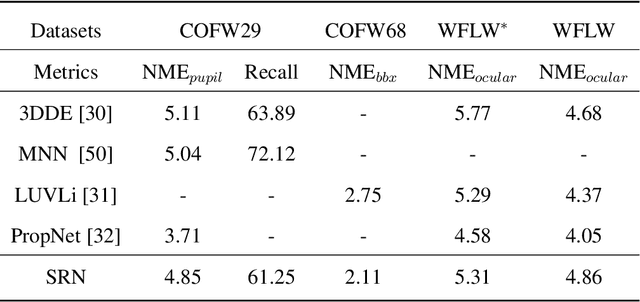

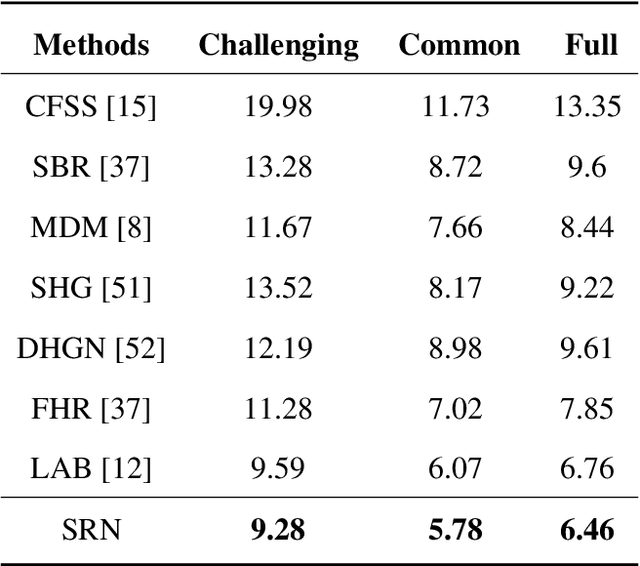
Abstract:In facial landmark localization tasks, various occlusions heavily degrade the localization accuracy due to the partial observability of facial features. This paper proposes a structural relation network (SRN) for occlusion-robust landmark localization. Unlike most existing methods that simply exploit the shape constraint, the proposed SRN aims to capture the structural relations among different facial components. These relations can be considered a more powerful shape constraint against occlusion. To achieve this, a hierarchical structural relation module (HSRM) is designed to hierarchically reason the structural relations that represent both long- and short-distance spatial dependencies. Compared with existing network architectures, HSRM can efficiently model the spatial relations by leveraging its geometry-aware network architecture, which reduces the semantic ambiguity caused by occlusion. Moreover, the SRN augments the training data by synthesizing occluded faces. To further extend our SRN for occluded video data, we formulate the occluded face synthesis as a Markov decision process (MDP). Specifically, it plans the movement of the dynamic occlusion based on an accumulated reward associated with the performance degradation of the pre-trained SRN. This procedure augments hard samples for robust facial landmark tracking. Extensive experimental results indicate that the proposed method achieves outstanding performance on occluded and masked faces. Code is available at https://github.com/zhuccly/SRN.
Learning Segmentation Masks with the Independence Prior
Nov 13, 2018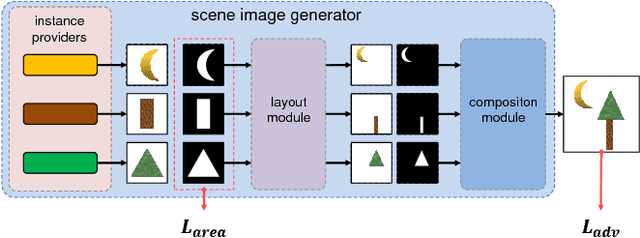
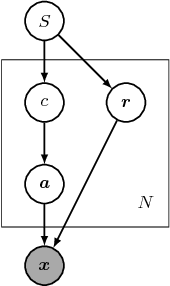
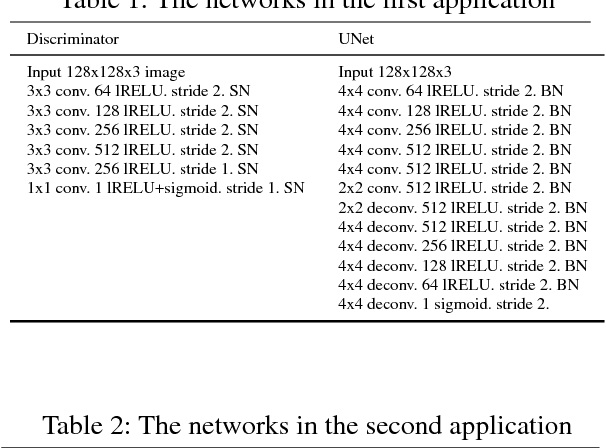
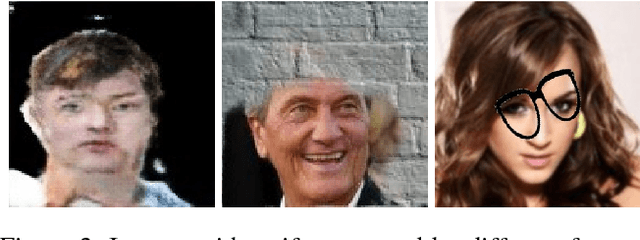
Abstract:An instance with a bad mask might make a composite image that uses it look fake. This encourages us to learn segmentation by generating realistic composite images. To achieve this, we propose a novel framework that exploits a new proposed prior called the independence prior based on Generative Adversarial Networks (GANs). The generator produces an image with multiple category-specific instance providers, a layout module and a composition module. Firstly, each provider independently outputs a category-specific instance image with a soft mask. Then the provided instances' poses are corrected by the layout module. Lastly, the composition module combines these instances into a final image. Training with adversarial loss and penalty for mask area, each provider learns a mask that is as small as possible but enough to cover a complete category-specific instance. Weakly supervised semantic segmentation methods widely use grouping cues modeling the association between image parts, which are either artificially designed or learned with costly segmentation labels or only modeled on local pairs. Unlike them, our method automatically models the dependence between any parts and learns instance segmentation. We apply our framework in two cases: (1) Foreground segmentation on category-specific images with box-level annotation. (2) Unsupervised learning of instance appearances and masks with only one image of homogeneous object cluster (HOC). We get appealing results in both tasks, which shows the independence prior is useful for instance segmentation and it is possible to unsupervisedly learn instance masks with only one image.
 Add to Chrome
Add to Chrome Add to Firefox
Add to Firefox Add to Edge
Add to Edge